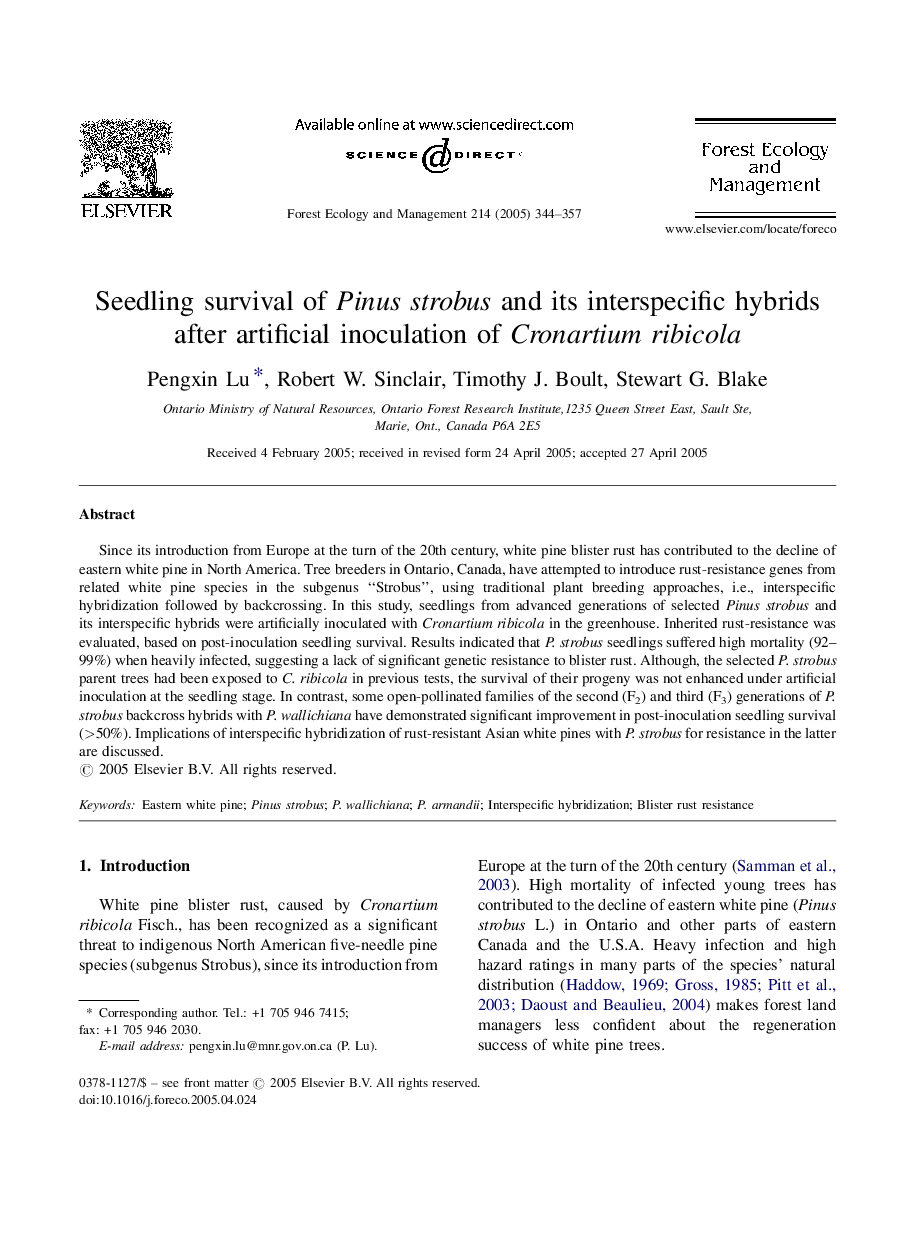| Article ID | Journal | Published Year | Pages | File Type |
|---|---|---|---|---|
| 9620251 | Forest Ecology and Management | 2005 | 14 Pages |
Abstract
Since its introduction from Europe at the turn of the 20th century, white pine blister rust has contributed to the decline of eastern white pine in North America. Tree breeders in Ontario, Canada, have attempted to introduce rust-resistance genes from related white pine species in the subgenus “Strobus”, using traditional plant breeding approaches, i.e., interspecific hybridization followed by backcrossing. In this study, seedlings from advanced generations of selected Pinus strobus and its interspecific hybrids were artificially inoculated with Cronartium ribicola in the greenhouse. Inherited rust-resistance was evaluated, based on post-inoculation seedling survival. Results indicated that P. strobus seedlings suffered high mortality (92-99%) when heavily infected, suggesting a lack of significant genetic resistance to blister rust. Although, the selected P. strobus parent trees had been exposed to C. ribicola in previous tests, the survival of their progeny was not enhanced under artificial inoculation at the seedling stage. In contrast, some open-pollinated families of the second (F2) and third (F3) generations of P. strobus backcross hybrids with P. wallichiana have demonstrated significant improvement in post-inoculation seedling survival (>50%). Implications of interspecific hybridization of rust-resistant Asian white pines with P. strobus for resistance in the latter are discussed.
Related Topics
Life Sciences
Agricultural and Biological Sciences
Ecology, Evolution, Behavior and Systematics
Authors
Pengxin Lu, Robert W. Sinclair, Timothy J. Boult, Stewart G. Blake,
